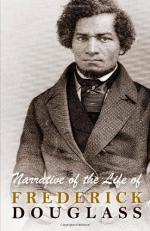I had resided but a short time in Baltimore before I observed a marked difference, in the treatment of slaves, from that which I had witnessed in the country. A city slave is almost a freeman, compared with a slave on the plantation. He is much better fed and clothed, and enjoys privileges altogether unknown to the slave on the plantation. There is a vestige of decency, a sense of shame, that does much to curb and check those outbreaks of atrocious cruelty so commonly enacted upon the plantation. He is a desperate slaveholder, who will shock the humanity of his non-slaveholding neighbors with the cries of his lacerated slave. Few are willing to incur the odium attaching to the reputation of being a cruel master; and above all things, they would not be known as not giving a slave enough to eat. Every city slaveholder is anxious to have it known of him, that he feeds his slaves well; and it is due to them to say, that most of them do give their slaves enough to eat. There are, however, some painful exceptions to this rule. Directly opposite to us, on Philpot Street, lived Mr. Thomas Hamilton. He owned two slaves. Their names were Henrietta and Mary. Henrietta was about twenty-two years of age, Mary was about fourteen; and of all the mangled and emaciated creatures I ever looked upon, these two were the most so. His heart must be harder than stone, that could look upon these unmoved. The head, neck, and shoulders of Mary were literally cut to pieces. I have frequently felt her head, and found it nearly covered with festering sores, caused by the lash of her cruel mistress. I do not know that her master ever whipped her, but I have been an eye-witness to the cruelty of Mrs. Hamilton. I used to be in Mr. Hamilton’s house nearly every day. Mrs. Hamilton used to sit in a large chair in the middle of the room, with a heavy cowskin always by her side, and scarce an hour passed during the day but was marked by the blood of one of these slaves. The girls seldom passed her without her saying, “Move faster, you black gip!” at the same time giving them a blow with the cowskin over the head or shoulders, often drawing the blood. She would then say, “Take that, you black gip!” continuing, “If you don’t move faster, I’ll move you!” Added to the cruel lashings to which these slaves were subjected, they were kept nearly half-starved. They seldom knew what it was to eat a full meal. I have seen Mary contending with the pigs for the offal thrown into the street. So much was Mary kicked and cut to pieces, that she was oftener called “pecked” than by her name.




